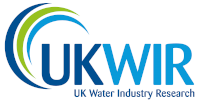The importance of academic partnerships for safer drinking water
Maintaining drinking water safety is vital given the potential impact of pollutants on public health and the reputational and financial risks to water utilities.
Enhancing biological pesticide degradation in drinking water treatment is of critical importance due to the health risks associated with pesticides and their residues in drinking water, and the challenging nature of treating some of these micropollutants using conventional approaches.
Even with proper application, pesticides can be carried away from fields by rain or irrigation water. This runoff can end up in rivers, streams and reservoirs. Additionally, some pesticides can leach from soil and contaminate groundwater sources, or via incorrect storage and disposal.
A comprehensive approach
To tackle this issue UKWIR launched a series of research initiatives, including the ‘Harnessing pesticide degrading bacteria for enhanced drinking water treatment’ project, led by Dr Francis Hassard, senior lecturer in public health microbiology at the Water Science Institute at Cranfield University. Co-investigators were Professor Peter Jarvis and Dr Pablo Campo Moreno, while the lead investigator was PhD candidate Laura Pickering.
Falling under UKWIR’s theme 2 ‘providing clean water for all’, the project team took a comprehensive approach, beginning with a literature review to understand bacterial biodegradation of micropollutants in UK drinking waters.
Next, the project progressed to isolating and testing nine different bacterial strains or assemblages specifically for their degradation capabilities against the pesticide metaldehyde and the glyphosate residue aminomethylphosphonic acid (AMPA); and included bioaugmentation into pilot-scale slow sand filtration systems, treating real river water pre-treated with coagulation/clarification and rapid gravity filtration.
Additionally, detailed molecular characterisation was undertaken to understand the impact of bioaugmentation agents on the microbial community.
The results
The research yielded significant findings, including the effectiveness of isolation, strain selection and bioaugmentation in slow sand filtration (SSF) systems for metaldehyde removal. It highlighted the variability in bacterial activity and degradation rates across different environmental conditions and media, emphasising the need for understanding and optimising bioremediation and drinking water treatment.
These findings are particularly relevant for environmental clean-up efforts and underscores the potential of these bacteria in real-world water treatment applications.
The value of the research for water companies includes financial benefits achieved by avoidance of in-house research, while the collaborative research and data-sharing provides a ‘one voice’ approach - allowing for more effective planning and identification of knowledge gaps.
Additionally, there is a reputational benefit due to reduced risk of future regulatory non-compliance, improved value for money for customers and the generation of a library of degrading bacterial strains and chassis, which will be invaluable for future studies by the UK water sector.
“Strong partnerships between academia and research organisations such as UKWIR are important to overcoming the challenges faced by the water sector,” says Dr Francis Hassard of Cranfield University.
“As water sources become increasingly complex and less predictable, and new micropollutants like per- and polyfluoroalkyl substances (PFAS) and pesticides emerge, this research offers a timely and important solution. By leveraging the power of natural biodegradation, we can help establish a more sustainable, cost-effective approach to drinking water treatment for the future.”
Recommendations
- Enhance bacterial efficiency: Use genetic modifications or bacterial consortia to improve AMPA degradation rates
- Optimise biofilter reactor system design: Adjust the design and operational parameters of water filtration systems such as flow rates, biomass concentration and mass transfer to improve efficacy and resilience
Next steps
The project concluded that long-term studies are needed to assess the stability and effectiveness of bacterial activity over time and under various conditions, and further research is required to investigate the interaction between various compounds in real water and their effect on bacterial AMPA degradation.
The full report, ‘Harnessing pesticide degrading bacteria for enhanced drinking water treatment’ is available here.
